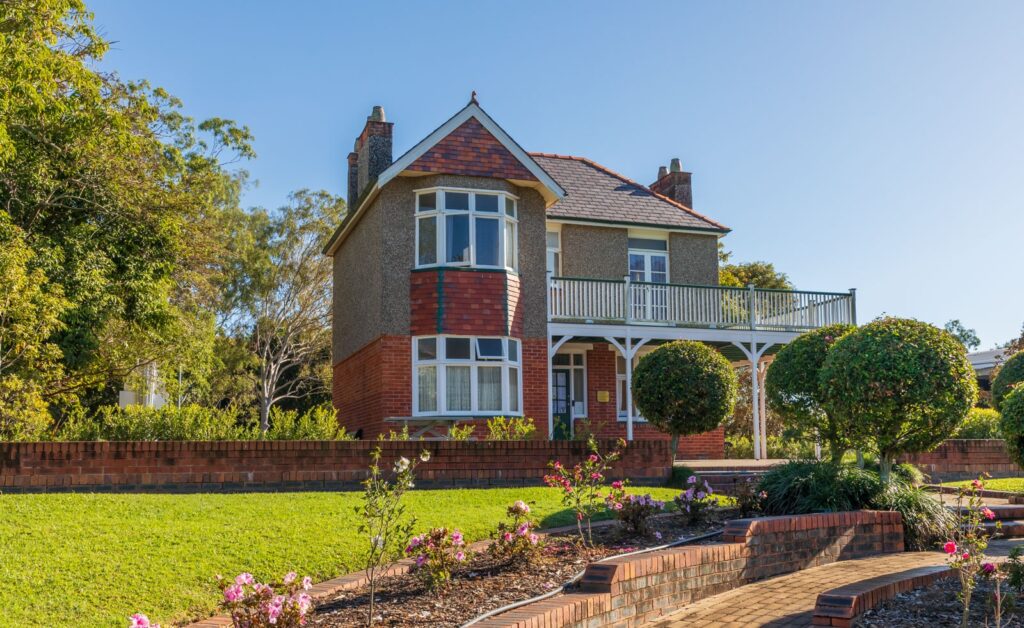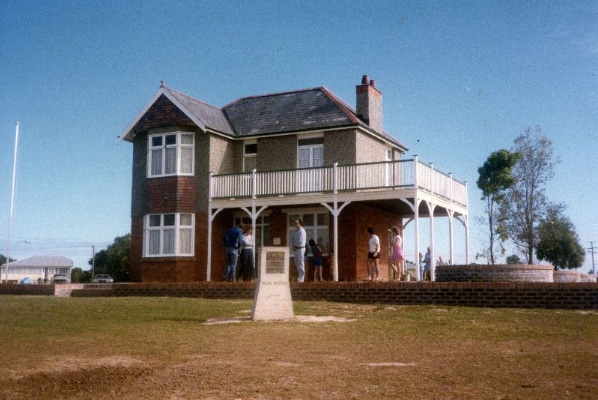
Saved from demolition by a dedicated group of Bundaberg locals in the early 1980s, Bert Hinkler’s English home ‘Mon Repos’ stands as a lasting memorial to the Bundaberg-born aviation hero.
Adjacent to Hinkler Hall of Aviation in the Bundaberg Botanic Gardens, historic Hinkler House has, for nearly 40 years, been the focal point for honouring the great man.
As detailed in Bundaberg Now’s Hidden Histories podcast, the two storey Edwardian style residence was saved from demolition in Southampton, England, and relocated to Bundaberg when a group of Hinkler admirers heard of its impending fate.
The then Bundaberg City Council and the Queensland Government, as well as community organisations, businesses and individuals, joined together to dismantle and relocate the building brick by brick, rebuilding it in what was to become the Bundaberg Botanic Gardens.
Three Bundaberg locals, Stan Lohse, Merv Purkiss and Lex Rowland set out for England in May 1983 to dismantle the house with the help of English builders, who were as enthusiastic as the Bundaberg community to see the house preserved.
The dismantling took the team in England a full month, followed by further time packing it up to travel to Australia.
Once back in Australia, the Rotary Club of East Bundaberg stepped up to project manage the rebuilding of the home on the site in North Bundaberg.
Listed among Bundaberg Regional Council’s Local Heritage Places, Hinkler House honours his memory and his significant achievements in aviation, ensuring his story continues to inspire generations of admirers and aspiring aviators.
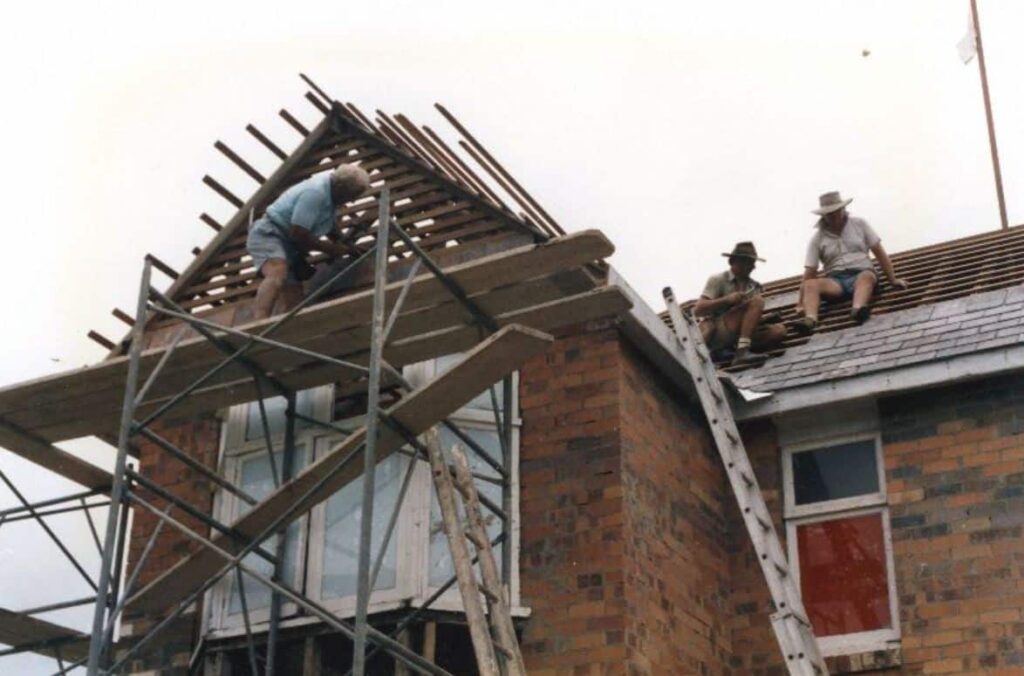
The house was built for Hinkler and his wife Nance in Southampton, England, in 1925.
Hinkler named the house ‘Mon Repos’ in honour of his hometown and the beach that inspired his love of flight.
The house is a cavity brick construction, with pebbledash upper exterior walls, Baltic pine floors and European redwood balustrades, architraves and mouldings.
The reconstructed interior of the house retains genuine and replicated items of furniture and fixtures from Hinkler’s life.
Hinkler House opened to the public as a memorial museum on 16 June 1984.
Around 4,500 people attended the opening, which was marked by a special flyover by the American Air Force and the local Bundaberg Aero Club.
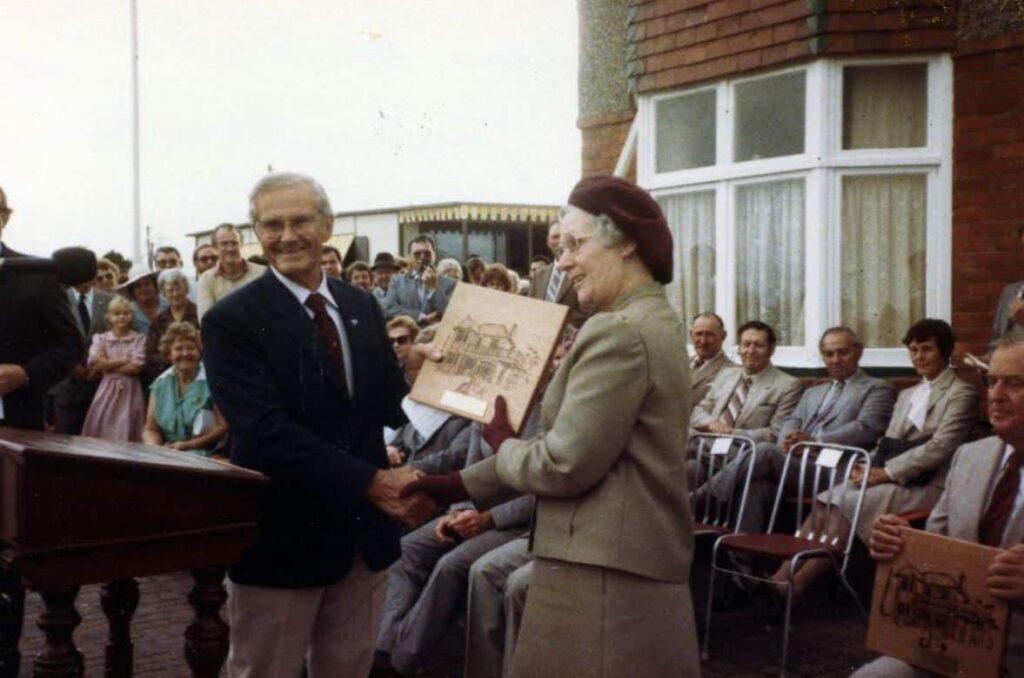
Bundaberg Botanic Gardens was chosen as the site for the relocation due to its significance in the life story of Hinkler.
The Botanic Gardens are close to Hinkler’s famous landing site, where he returned to Bundaberg having made the first successful solo flight from England to Australia in 1928.
Nearby was Hinkler’s North Bundaberg State School and the lagoon where he spent many hours observing the flight of birds, especially the ibis, which contributed greatly to his aviation achievements.
Hinkler’s ambitious long-distance aircraft that he built and designed with aeronautical engineer Roland Bound in 1930 was named The Ibis.
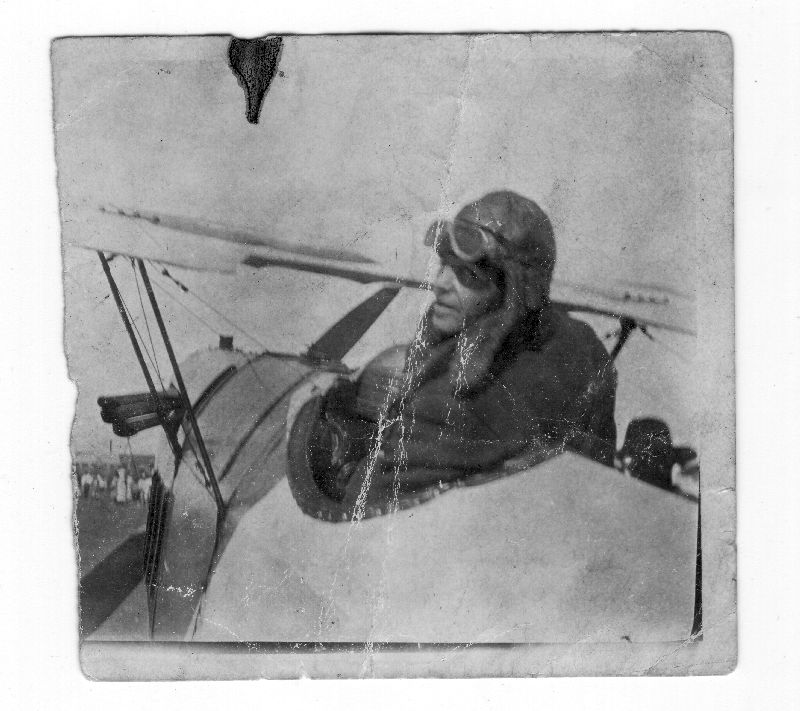
Hinkler’s love of aviation began at a young age, and in 1912 he successfully flew a man-carrying glider that he had built himself on Mon Repos Beach.
After travelling to England in 1914, Hinkler enlisted in the Royal Naval Air Service, and served with distinction in World War I, initially as an observer/air gunner before training as a pilot in 1918.
In 1921 Hinkler made a long-distance record-breaking flight from Sydney to Bundaberg.
In addition to his pioneering England to Australia flight in 1928, Hinkler flew the first solo flight across the South Atlantic in 1931.
While attempting a second flight to Australia in 1933, Hinkler crashed in the Appennines mountain range in Italy and died from exposure.
